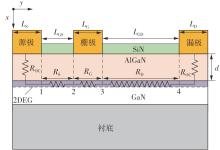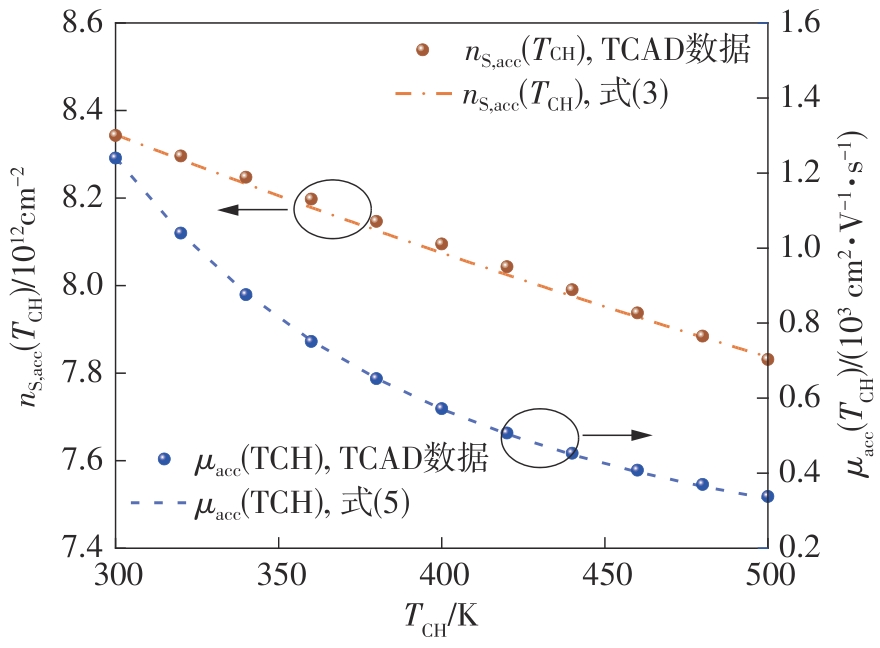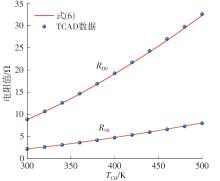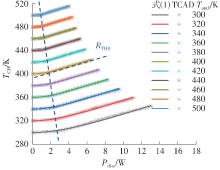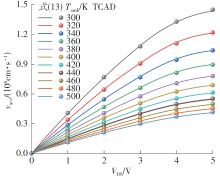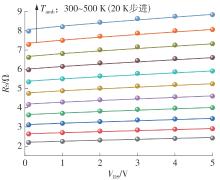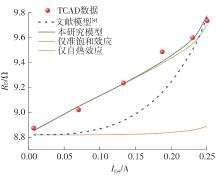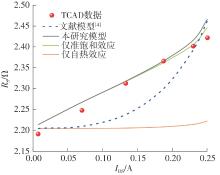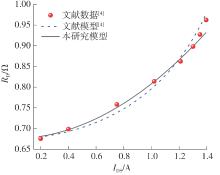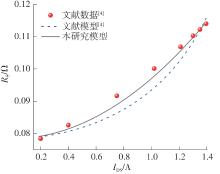| 1 |
WU Y F, KELLER S, KOZODOY P,et al .Bias dependent microwave performance of AlGaN/GaN MODFET’s up to 100 V[J].IEEE Electron Device Letters,1997,18(6):290-292.
|
| 2 |
WU Y F, KELLER B P, FINI P,et al .High Al-content AlGaN/GaN MODFETs for ultrahigh performance[J].IEEE Electron Device Letters,1998,19(2):50-53.
|
| 3 |
WU Y F, KELLER B P, FINI P,et al .Short-channel Al0.5Ga0.5N/GaN MODFETs with power density >3 W/mm at 18 GHz[J].Electronics Letters,1997,33(20):1742-1743.
|
| 4 |
GHOSH S, AHSAN S A, CHAUHAN Y S,et al .Modeling of source/drain access resistances and their temperature dependence in GaN HEMTs [C]∥Proceedings of the 2016 IEEE International Conference on Electron Devices and Solid-State Circuits (EDSSC).Hong Kong:IEEE,2016:247-250.
|
| 5 |
GREENBERG D R, ALAMO J A D .Velocity saturation in the extrinsic device:a fundamental limit in HFET’s[J].IEEE Transactions on Electron Devices,1994,41(8):1334-1339.
|
| 6 |
ZHAO X, XU Y, JIA Y,et al .Temperature-dependent access resistances in large-signal modeling of millimeter-wave AlGaN/GaN HEMTs[J].IEEE Transactions on Microwave Theory Techniques,2017,65(7):2271-2278.
|
| 7 |
YANG M, GAO Z, SU X,et al .Study of drain access resistance in saturation region of AlGaN/GaN heterostructure field-effect transistors[J].IEEE Transactions on Electron Devices,2022,69(5):2293-2298.
|
| 8 |
THORSELL M, ANDERSSON K, FAGERLIND M,et al .Thermal study of the high-frequency noise in GaN HEMTs[J].IEEE Transactions on Microwave Theory,2009,57(1):19-26.
|
| 9 |
GREENBERG D R, ALAMO J D .Velocity saturation in the extrinsic device: a fundamental limit in HFET’s[J].IEEE Transactions on Electron Devices,1994,41(8):1334-1339.
|
| 10 |
TIRADO J M, MIEVILLE F, XU Z,et al .Origin of the Increasing Access Resistance in AlGaN/GaN HEMTs [C]∥Proceedings of the 2008 Device Research Conference.Santa Barbara:IEEE,2008:203-204.
|
| 11 |
FARAHMAND M, GARETTO C, BELLOTTI E,et al .Monte Carlo simulation of electron transport in the Ⅲ-nitride wurtzite phase materials system: binaries and ternaries[J].IEEE Transactions on Electron Devices,2001,48(3):535-542.
|
| 12 |
TROFIMENKOFF F N .Field-dependent mobility analysis of the field-effect transistor[J].Proceedings of the IEEE,1965,53(11):1765-1766.
|
| 13 |
CAUGHEY D M, THOMAS R E .Carrier mobilities in silicon empirically related to doping and field[J].Proceedings of the IEEE,1967,55(12):2192-2193.
|
| 14 |
THORSELL M, ANDERSSON K, HJELMGREN H,et al .Electrothermal access resistance model for GaN-based HEMTs[J].IEEE Transactions on Electron Devices,2011,58(2):466-472.
|
| 15 |
ISLAM S, ALIM M A, CHOWDHURY A Z,et al . Modeling of access resistances and channel temperature estimation for GaN HEMT[J].Journal of Thermal Analysis and Calorimetry,2022,147(20):10991-10998.
|
| 16 |
YANG M, LÜ Y J, FENG Z H,et al .Study of source access resistance at direct current quiescent points for AlGaN/GaN heterostructure field-effect transistors[J].Journal of Applied Physics,2016,119(22):224501/1-5.
|
| 17 |
WANG C, XU Y, YU X,et al .An Electrothermal model for empirical large-signal modeling of AlGaN/GaN HEMTs including self-heating and ambient temperature effects[J].IEEE Transactions on Microwave Theory Techniques,2014,62(12):2878-2887.
|
| 18 |
汪昌思,徐跃杭,闻彰,et al .微波场板GaN HEMTs大信号特性及其模型研究[J].电子科技大学学报,2017,46(3):485-491.
|
|
WANG Changsi, XU Yuehang, WEN Zhang,et al . Large-signal characterization and modeling for microwave field-plate GaN HEMTs [J].Journal of University of Electronic Science and Technology of China,2017,46(3):485-491.
|
| 19 |
DELAGEBEAUDEUF D, LINH N T .Metal-(n) AlGaAs-GaAs two-dimensional electron gas FET[J].IEEE Transactions on Electron Devices,1982,29(6):955-960.
|
| 20 |
AMBACHER O, FOUTZ B .Two-dimensional electron gases induced by spontaneous and piezoelectric polarization charges in N- and Ga-face AlGaN/GaN heterostructures[J].Journal of Applied Physics,1999,85(6):3222-3233.
|
| 21 |
郝跃,张金风,张进成 .氮化物宽禁带半导体材料与电子器件[M].北京:科学出版社,2013: 77-86.
|
| 22 |
KHAN M N, AHMED U F, AHMED M M,et al .An improved model to assess temperature-dependent DC characteristics of submicron GaN HEMTs[J].Journal of Computational Electronics,2018,17(2):653-662.
|
| 23 |
KHANDELWAL S, GOYAL N, FJELDLY T A. A physics-based analytical model for 2DEG charge density in AlGaN/GaN HEMT devices[J].IEEE Transactions on Electron Devices,2011,58(10):3622-3625.
|
| 24 |
CHOI S, HELLER E R, DORSEY D,et al .The impact of bias conditions on self-Heating in AlGaN/GaN HEMTs[J].IEEE Transactions on Electron Devices,2013,60(1):159-162.
|
| 25 |
PU J, SUN J, ZHANG D .An accurate polynomial-based analytical charge control model for AlGaN/GaN HEMT[J].Semiconductors,2011,45(9):1205-1210.
|
| 26 |
KRANTI A, HALDAR S, GUPTA R S .An accurate charge control model for spontaneous and piezoelectric polarization dependent two-dimensional electron gas sheet charge density of lattice-mismatched AlGaN/GaN HEMTs[J].Solid-State Electronics,2002,46(5):621-630.
|
| 27 |
CUI P, LIU H, LIN W,et al .Influence of different gate biases and gate lengths on parasitic source access resistance in AlGaN/GaN heterostructure FETs[J].IEEE Transactions on Electron Devices,2017,64(3):1038-1044.
|
 ), YAO Yongkang1, GENG Kuiwei1,2(
), YAO Yongkang1, GENG Kuiwei1,2( )
)
